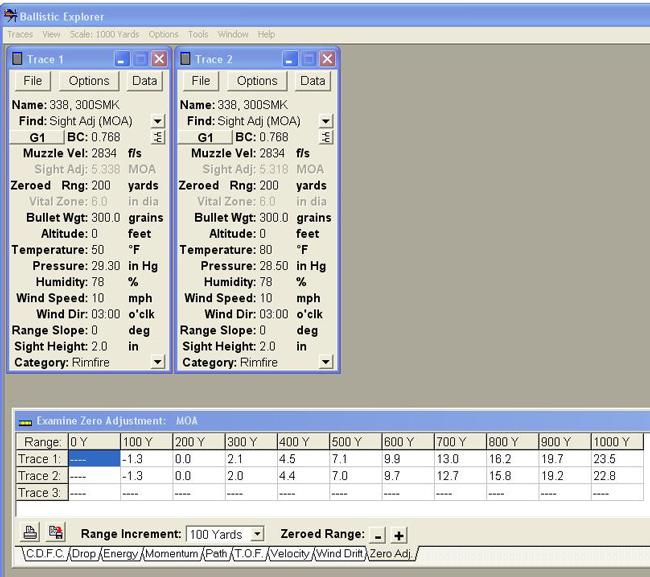Down Under Hunter
Well-Known Member
I am looking at getting Kenton industries to make a BDC sleeve for my NXS to simplify shots out to around 600 M with little or no windage corrections needed. In theory I am getting alot of my shots present at distance out to around 700 yards and I am looking at using their mil spec sleeve that has the std 10 moa quarter clicks in the std position plus 3 tiers of distances for 30 minutes of elevation from my zero. Obvioulsy this does not help at all with windage adjustments.
I am well aware of the downfalls of the BDC design, loads, conditons changing, downdrafts, updrafts etc. Also I am smart enough to know it aint as simple as dial the range and aim dead on.
I am lead to believe however at these medium ranges within a certain range, BP changes, temp , RH will only have small effect out to a certain distance.
QUESTION 1- What is the maximum effective range you feel this technique can work to accurately with high percentage ?
Question 2- My understanding is the largest conditon to contribute to POI change is Baro STN pressure. The lowest number I have shot a is 27.8 and the highest is around high 29's. With the most coming between 28.5 and 29.3. Where do I pick the most effective figure to use ? And what sort of impact change at 700 am I going to find between the above BP's when used for elevation dope ?
Question 3- Can you see a major flaw in my thiinking ? I know dialing is the way to go, but for some of these chances I get where I am time poor and need to set up and shoot at a medium range , I can see some merit in the BDC. I also have the ability to exbal and dial for the long ones because I have the std 10 moa clicks on the bottom to use ?
I am shooting a 338 Edge 2834 fps 300 smk temps at 50-80 deg, BPs between 28.5- 29.3 AV

How does this sound ?
DUH
I am well aware of the downfalls of the BDC design, loads, conditons changing, downdrafts, updrafts etc. Also I am smart enough to know it aint as simple as dial the range and aim dead on.
I am lead to believe however at these medium ranges within a certain range, BP changes, temp , RH will only have small effect out to a certain distance.
QUESTION 1- What is the maximum effective range you feel this technique can work to accurately with high percentage ?
Question 2- My understanding is the largest conditon to contribute to POI change is Baro STN pressure. The lowest number I have shot a is 27.8 and the highest is around high 29's. With the most coming between 28.5 and 29.3. Where do I pick the most effective figure to use ? And what sort of impact change at 700 am I going to find between the above BP's when used for elevation dope ?
Question 3- Can you see a major flaw in my thiinking ? I know dialing is the way to go, but for some of these chances I get where I am time poor and need to set up and shoot at a medium range , I can see some merit in the BDC. I also have the ability to exbal and dial for the long ones because I have the std 10 moa clicks on the bottom to use ?
I am shooting a 338 Edge 2834 fps 300 smk temps at 50-80 deg, BPs between 28.5- 29.3 AV

How does this sound ?
DUH
Last edited:

